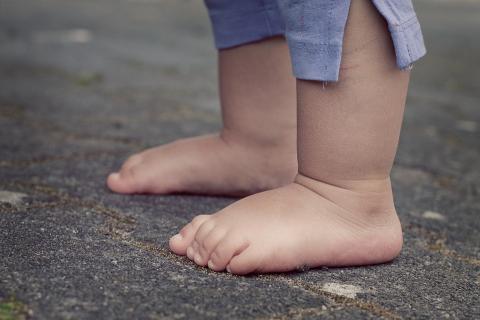
Grounding, also known as earthing, is a relatively new idea in the modern world, precisely because it didn’t exist in the past: we were already walking around in our bare feet, whether inside or outside, and the need to reduce electromagnetic currents wasn’t an issue since electronics like cellphones and laptops didn’t exist. Today, however, it isn’t uncommon to find grounding or earthing mats, mattresses, flip flops, sneakers, and even body bands that claim to equalize our bodies to the same energy as the earth.
So, does grounding work? Does science back it up? Is it necessary?
In short: yes, yes, and yes.
While some articles will explain, or at least attempt to understand, the exact chemical exchanges that are going on as our bare skin touches the earth, Dr. Andrew Weil explains grounding in a simpler way: “Grounding stems from the idea that in modern city life we no longer have direct physical contact with the Earth, and therefore are losing out on purported health benefits of exchanging electrons with the surface of our planet.”
Emerging research suggests that this lack of interaction with the earth’s electrons can contribute to physiological and even psychological illness, and while it might sound strange, studies are backing the science of grounding more and more. This 2013 article demonstrated that grounding has the ability to reduce blood viscosity, resulting in a reduced risk for cardiovascular disease while an earlier 2004 study showed that sleeping on the ground or on a conductive mattress pad can reduce pain, stress, and sleep dysfunction. Of particular note, female participants showed the most dramatic changes with circadian rhythms normalizing over the study period. Yet another study, this one published in 2015, suggests that emerging science pay attention to the way in which grounding can reduce chronic inflammation. In fact, the study ended with this powerful summary: “The living matrix (or ground regulation or tissue tensegrity-matrix system), the very fabric of the body, appears to serve as one of our primary antioxidant defense systems. As this report explains, it is a system requiring occasional recharging by conductive contact with the Earth’s surface—the “battery” for all planetary life—to be optimally effective.”
Additional, though less studied, benefits include:
- Reduced chronic pain
- Improved circulation
- Reduction in aging symptoms
- Faster healing and recovery time
- Decreased muscle tension
- Reduced stress hormones
- Increased energy
Grounding is, perhaps, most effective when we can put our bare feet on the grass or dirt, but this isn’t practical for most people. To start, many of us live in city or even suburban areas where the only practical place to walk barefoot is on the grass, often contaminated with dog feces or pesticides. Additional safety concerns include broken glass, contaminated garbage, bees, wasps, and thorny plants. For those lucky to live closer to nature, enjoy the ground as much as you can. Not sure how to ground? Here are a few ideas:
- Camping. Choose a starry night and try sleeping directly on the ground.
- Enjoy a picnic in the park with your family. Take off your shoes and enjoy the feeling of grass between your toes.
- Try hiking barefoot. Find a relatively untechnical trail and get dusty and dirty.
- Walk around your home barefoot as much as possible.
- For even more ideas, check out this article.
For those who don’t often have the opportunity to ground on the surface of the earth, there are a variety of grounding products, one of which is becoming more popular: grounding mats.
Grounding mats come in a variety of sizes and use the idea of grounding in a manmade, often more accessible, way. Grounding mats are easy to use and generally only require a plug in which to connect them. For those that don’t want to sleep on a mat or are looking to maximize their day time grounding, additional products include a mat kit (which sits underneath a keyboard and mouse, on a desk, or under your feet when sitting at a desk), a throw kit (which acts as a conductive blanket), and even earthing patches (which work similar to EKG electrode patches.)
While the benefits are becoming increasingly well-studied, it’s important to consult with your doctor before trying a grounding mat, especially for those who are on blood thinners or blood pressure medication.
Have you tried grounding? Have you noticed any improvements? Let us know in the comments below!








